On this page
Thomas A. CowardThis page lists books written by, or including a substantial contribution by, Thomas Coward.The books are ordered by publication date with the most recent at the top.
|
|
|
|
Bird and Other Nature Problems
T.A. Coward
Frederick Warne & Co
1931
|
Buy from amazon.co.uk 
|
|
The Life Of Birds
T.A. Coward
A & C Black
1931
|
Buy from amazon.co.uk 
|
|
Bird Life At Home & Abroad: With Other Nature Observations
T.A. Coward
Frederick Warne & Co
1927
240 pages with black and white photographs.
|
Buy from amazon.co.uk 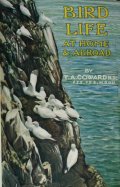
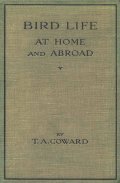
|
|
The Birds Of The British Isles And Their EggsThird series: Migration And Habits, With Observations On Our Rarer VisitantsT.A. Coward
Frederick Warne & Co
1926
This is the third of three volumes. The original two volumes were published in 1919 and 1920. New editions of set of three were subsequently published on a number of occasions.
|
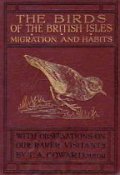
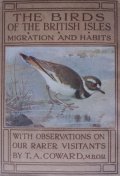 |
|
Life of the Wayside & WoodlandT.A. Coward
With 128 illustration from photographs 40 of which prepared in colour by W.J. Stokoe and 11 by Thomas Baddeley
Frederick Warne & Co
1923
A number of editions of this book were subsequently published.
|
Buy from amazon.co.uk 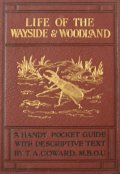
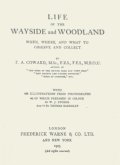
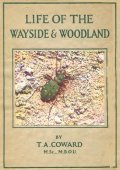
|
|
Birds And Their Young
T.A. Coward
Illustrations: Roland Green
Gay & Hancock
1923
|
Buy from amazon.co.uk 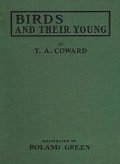
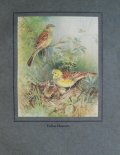
|
|
Bird Haunts And Nature MemoriesT.A. Coward
Frontispiece by Archibald Thorburn and photographic illustrations
Frederick Warne & Co
1922
From the preface: The titles and subject-matter of many of the chapters in this miscellany originally appeared in the Manchester Guardian, Scotsman, Daily Dispatch, and Westminster Review. Through the courtesy of the proprietors and editors I am able to issue them in their present form. In every case, however, the articles have been revised, and in most recast and extended. The Preservation of our Fauna was the subject of an address, delivered as President, before the Manchester Literary and Philosophical Society. The illustrations, except that of the Dandy, for which I am indebted to Messrs. Nicholson and Gartner of Carlisle, are the work of personal friends, who have taken considerable trouble to supply the subjects I desired. The name of each photographer appears in the list of illustrations. I am especially indebted to Mr. Archibald Thorburn, and to Messrs. Longmans, Green and Co., who hold the copyright, for permission to reproduce the original drawing of the Noctule. Of all pictures I know, this is the best representation of this bat.
|
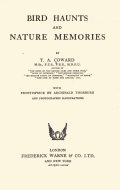
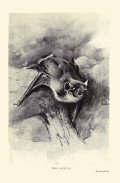
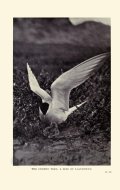 |
|
The Birds Of The British Isles And Their EggsSecond series: Anatidae to TetraonidaeT.A. Coward
213 coloured illustrations by Archibald Thorburn and others reproduced from Lord Lilford's Coloured Figures Of The Birds Of The British Islands
69 photographs by E.L. Turner, R. Kearton and others
Frederick Warne & Co
1920
This is the first of two volumes published in 1919/1920. A third volume was added in 1926.
From the preface: The reception of the previous series justifies the continuation of a work which provides accurate coloured figures of all but the very rare birds; the ornithological draughtsmanship of Archibald Thorburn, by whom most of the pictures were drawn, speaks for itself. In a book of this size it is not possible to figure a sufficient number of eggs to represent the great range of variation, but a type of egg of most birds which nest in Britain has been included, drawn to average size; in the present series white or very light self coloured eggs have been omitted, size being stated in the text. To figure all variations of eggs of certain species would fill every plate and still the range would be incomplete; the book is not intended solely for the egg collector. All birds on the British list are dealt with in this and the previous series, but more space has intentionally been devoted to those which are likely to be met with than to rare stragglers and lost wanderers whose accidental occurrence on our shores entitles them to a place as birds which have occurred in Britain rather than as British birds. The list of reputed species might be swelled by the inclusion of many erroneous records; it is far too long as it is. Classification and nomenclature are, in the main, as in the B.O,U. List of 1915, but after consideration the Committee engaged upon revision has decided to adhere to the International rules, and a few alterations appear in the present volume. I have, moreover, slightly deviated from the list, including some species and excluding others, stating my reason for this change.
|
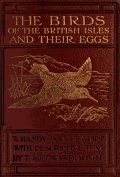
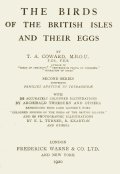
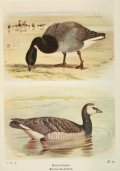
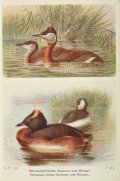 |
|
The Birds Of The British Isles And Their Eggs First series: Corvidae to SulidaeT.A. Coward
242 coloured illustrations by Archibald Thorburn and others reproduced from Lord Lilford's Coloured Figures Of The Birds Of The British Islands
65 photographs by Richard Kearton and others
Frederick Warne & Co
1919
This is the first of two volumes published in 1919/1920. A third volume was added in 1926.
From the preface: The task of producing and condensing a history of British birds leads to two discoveries - first that the writer is ignorant about certain facts, and secondly, that when the information is sought elsewhere it is often not to be found, or the 'doctors disagree.' Indeed, there is still a wide field open for workers on the habits, plumages and domestic economy of versatile birds. It is my hope that these pages will help and guide those who are interested in birds but have not taken up ornithology as a systematic study. Space forbids full details of plumage, structure and habits ; fuller descriptions must be sought in longer treatises, perhaps the most up-to-date of which is the 'Practical Handbook of British Birds' edited by H. F. Witherby. Further particulars of distribution may be found in the 'Hand-List,' in which Mr. Witherby was assisted by the Rev. F. C. R. Jourdain and Drs. E. Hartert and N. F. Ticehurst. Much useful information on habits is to be found in the 'British Bird-Book,' edited by F. B. Kirkman, in the standard works of Dresser, Macgillivray, Newton, Saunders, Seebohm, Sharpe and Yarrell, and in the pages of the Zoologist and the magazine British Birds. As, however, conflicting statements repeatedly appear in these works, it is necessary for the student to make copious notes of his observations and check the statements, whenever possible, by personal experience. To all the living ornithologists quoted and to the past masters of the study I am grateful. My main sources of information, however, are my own experiences and note-books, carefully kept and indexed for nearly forty years, and constant close observation of British bird life.
|
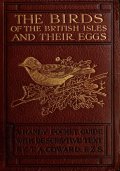
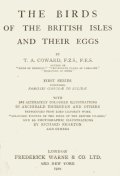
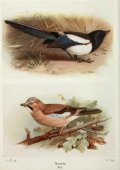
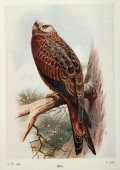 |
|
The Migration Of BirdsT.A. Coward
Cambridge University Press
1912
From the preface: Any attempt to elucidate the problems connected with the Migration of Birds must, in the present state of knowledge, contain some theory and speculation, but the dihgent observations of an army of careful workers yearly add facts, which though they may appear insignificant when considered alone, tend in the aggregate to confirm or repudiate the conclusions of past workers. I have endeavoured to bring together some of the more important theories, and to give prominence to ascertained facts; I have also striven to check desire on my own part to wander into realms of pure speculation, though conscious that I have not always evidence to support my suggestions.
|
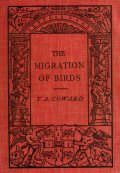
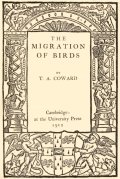 |
|
The Vertebrate Fauna Of Cheshire And Liverpool Bay
T.A. Coward, C. Oldham, James Johnstone, John A. Dockery
Volume I: The Mammals And Birds Of Cheshire
Volume II: The Dee As A Wildfowl Resort / The Reptiles And Amphibians Of Cheshire / The Fishes Of Cheshire And Liverpool Bay
Witherby & Co
1910
Preface: In the ten years which have elapsed since the Birds of Cheshire was written, much has been added to our knowledge of the county avifauna. Birds are only a portion of our vertebrate fauna, and the present work is an attempt to give an historical and distributional account of the vertebrate inhabitants of Cheshire, by which is implied an area geographical rather than political. The natural boundary of the county formed by the River Dee encloses many square miles of marshland which politically belong to Flint, and the sea area is extended beyond the actual territorial waters, and includes the shallow-water portion of Liverpool Bay and the whole of the estuaries of the Dee and Mersey. In describing the Mammals, Birds, Reptiles and Batrachians I have had the assistance of my old friend and collaborator Charles Oldham. Neither he nor I possessed any knowledge of the Fishes, but I am fortunate in having induced James Johnstone to undertake this group, a task for which his intimate practical knowledge of our local fisheries made him eminently fitted. The chapter on the Dee as a Wildfowl Resort, contributed by John A. Dockray, is the outcome of his long and varied experiences of wildfowling in the estuary. The illustrations, with a few exceptions, are from photographs taken by Thomas Baddeley, who has spared neither time nor trouble to obtain them. In the belief that a detailed description of the fauna of a definite area has scientific value, I submit these volumes to the public.
|
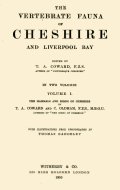
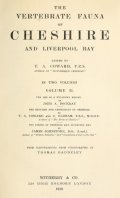
|
|
CheshireT.A. Coward
Cambridge County Geographies
Cambridge At The University Press
1910
Opening lines: It has been well said that our national history is made up of local history, and that our knowledge of the history of England as a whole will be all the better if we learn something of the way in which the English kingdoms were formed. This will help us to understand the relation which our modern divisions bear to the ancient ones. These modern divisions are named counties and shires, and we call one Kent and another Cheshire. In the latter instance, we note the suffix shire, while in the former there is not this special ending. If we know the reason for this difference we shall then be in a better position to understand the origin of the county of Cheshire in the early days of our history.
|
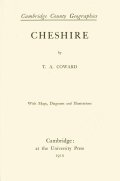
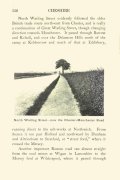
|
|
Picturesque CheshireT.A. Coward
Illustrations: Roger Oldham
Sherratt & Hughes
1903
From the preface: Complaints have been made to me that I love the country too much. That I love it I do not deny; too much is another matter. Now that the dweller in the town can by train or awheel easily find himself far from the toil and turmoil of the necessary city, the love of the country grows apace. Let me offer this book, not as a county history, not as an antiquarian or archaeological treatise, not even as a cycling guide, but as a short appreciative description of the county I know the best and love the most.
|
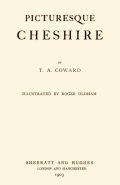
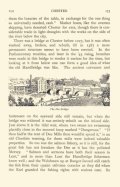
|
|
The Birds Of CheshireT.A. Coward and C. Oldham
Sherratt & Hughes
1900
Preface: There is no need nowadays to apologise for the publication of a County Fauna. The value of local lists to naturalists is so generally recognised, that it is a matter of surprise that no comprehensive account of the Cheshire Birds has hitherto been compiled. As no one has come forward to fill up the gap, and place Cheshire on a level with neighbouring counties in this respect, we venture to submit this work to the public. Our object has been to critically consider the lists of previous authors, who have dealt with portions of the county only, and the records which have appeared from time to time in magazines and other publications. We have been able to supplement these with information communicated to us by many correspondents, and with matter from our own notebooks. We have purposely omitted technical descriptions of plumage, and general observations on habits, which may be found in any reliable textbook, and have endeavoured to express ourselves as concisely and in as simple language as possible.
|
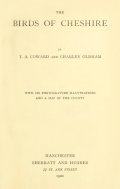
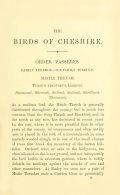
|
|